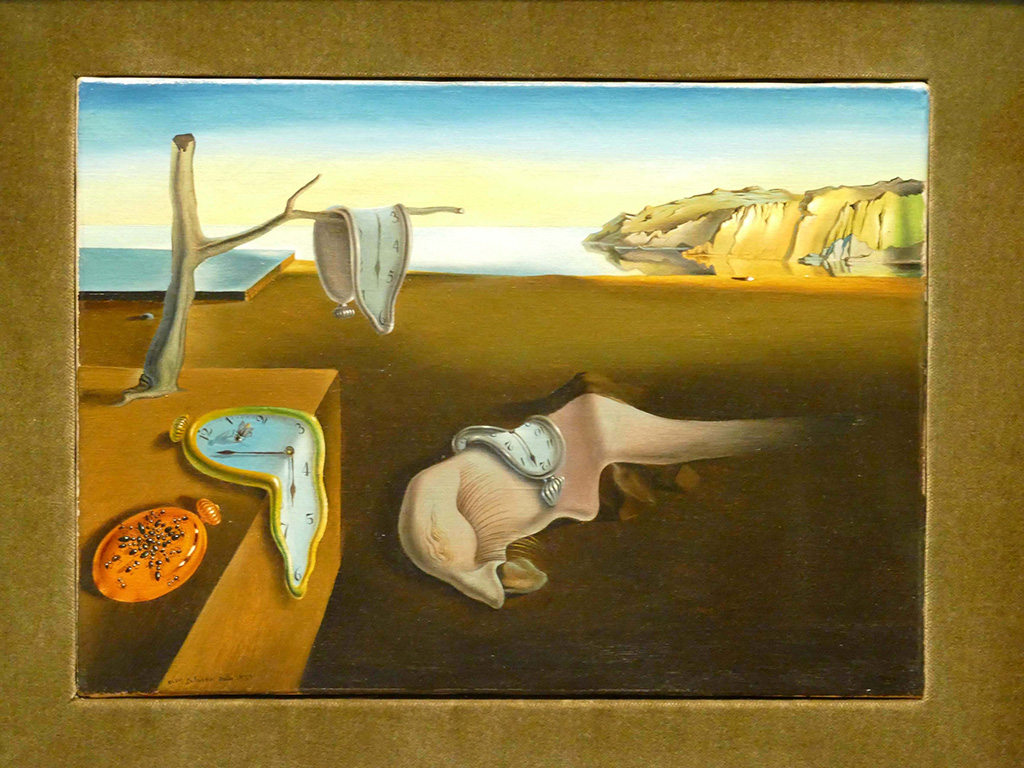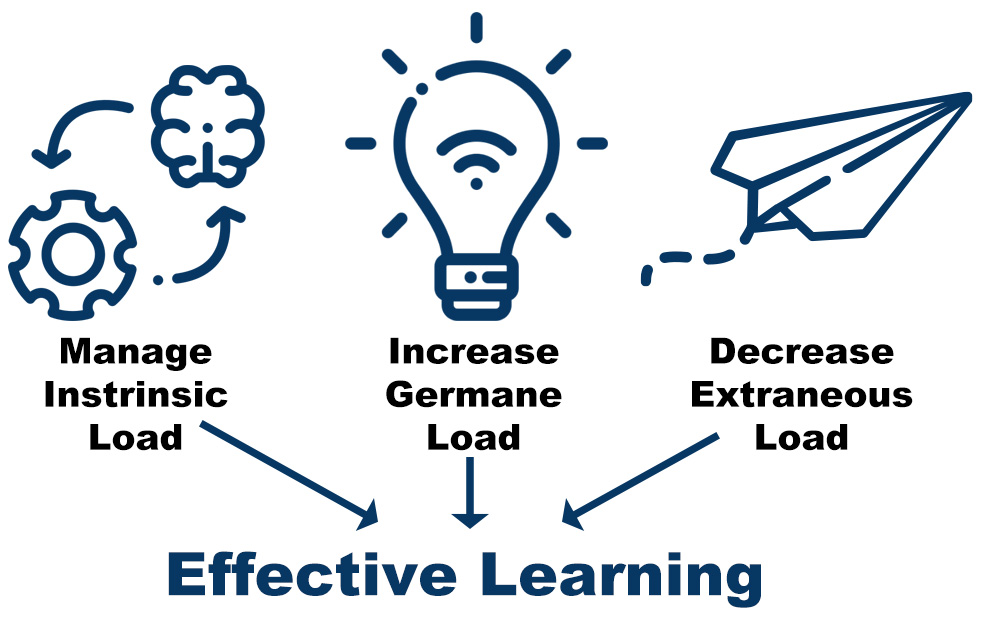What is Cognitive Load Theory (CLT)?
Cognitive load theory (CLT) is an instructional design principle at the intersection of psychology and education which helps teachers optimize the learning potential of their students. CLT divides the storage in our brains into 2 fundamental buckets, short-term and long-term memory, and helps define instructional procedures and cognitive processes for maximizing the latter.
By integrating this theory into an instructional framework, teachers can maximize their efforts with complex learning to help inspire successful learners.
The Basic Concepts of Cognitive Load Theory
Cognitive load theory was pioneered by educational psychologist John Sweller, Professor Emeritus at the University of New South Wales, in a seminal 1988 paper called “Cognitive load during problem solving: Effects on learning.” (Sweller, 1988) The theory states that all learners have a limited cognitive capacity for processing new information or ideas. It suggests that minimizing extraneous cognitive load – or any mental processing needs which do not contribute directly to the learning process – can increase retention of useful material by allowing more resources for directly learning-relevant activities. The idea is very intuitive: learning environments where too many things are happening simultaneously lead to distractions, or a split-attention effect, which compromises learning.
Use cognitive load theory in your curriculum!
A simplified model of human cognition will sound very familiar, and can be broken down into 2 basic resources:
- Long-Term Memory is the highly individual mental storage capacity in which learners remember information over an extended period of time, often years and decades.
- Short-Term Memory, or working memory, is the limited capacity in which learners first encounter information and process it.
John Sweller and many other cognitive load theorists continue to research memory and how learning can be modulated by aspects of the environment, human movement, and other influences (Paas, 2020). Sweller emphasizes that instructional design should take into account the role and limitations of working memory, and he even developed a computational model to support his claims. When the model is overloaded, learning is disrupted.
Short-term memory has a limited cognitive capacity for processing information, and CLT aims to provide strategies for presenting material in a way that optimizes learning and retention. Long-term memory may be much more permanent than short-term memory, but activating prior knowledge is not automatic.

Salvador Dali’s famous surrealist painting, “The Persistence of Memory”, 1931
Cognitive load is the amount of information that can be held in the working memory at any given time, and researchers now believe most people are only able to handle a cognitive load during learning of between 3 and 7 pieces of data in working memory at a time. Cognitive load is further divided into 3 types which all need to be understood by the instructional designer.
- Intrinsic Load. This is the inherent difficulty of the subject matter at hand.
- Extraneous Load. This is the memory processing that is not involved with the current learning effort.
- Germane Load. This is the memory processing devoted to learning new information.

In simple terms, the goal of instructional material using cognitive load theory should be to reduce the extraneous load when the intrinsic load is high, while increasing the germane load. Balancing intrinsic load and germane load will help build an effective transfer of learning from short-term to long-term memory. The instructional designer should reduce distractions, over-complexity, and unnecessary information, while increasing strategies to build information connections and retention. Effective learning builds organized elements, or schemas, in long-term memory by focusing a learner’s attention on effective cognitive processes, thereby solidifying the learner’s knowledge base. And schemas are the primary memories where experts build effective problem-solving skills compared to novices.
Element interactivity is another important concept in cognitive load theory, referring to the complexity of a concept based on the number of interconnected schema required to process it. For example, asking a learner to solve an algebra problem for the first time has high element interactivity because it requires significant prior knowledge of basic math concepts. On the other hand, guiding a learner through the steps required to solve that algebra problem has much lower element interactivity. If a concept has high element interactivity, the instructional designer should take steps to reduce the cognitive load using various strategies, including those suggested below.
Reviewing the latest research on the components of working and long-term memory provides insight into educational strategies for teachers. For example, a popular model of working memory, championed by Alan Baddeley, believes that it is built upon 3 components working in tandem to process information for storage in long-term memory. Baddeley explains:
“The three components comprised a control system of limited attentional capacity, termed the central executive, which is assisted by two subsidiary storage systems: the phonological loop, which is based on sound and language, and the visuospatial sketchpad.” (Baddeley, 2003)
Reducing Cognitive Load
How can teachers use cognitive load theory to improve academic achievement in their classrooms? Fortunately, in the decades since CLT first became a solid educational topic of debate, a wide variety of best practices have been developed.
Remember throughout these best practices that the learning process is interactive and complex, and a student’s personal history can significantly influence their learning in school. Factors that contribute to this include cultural backgrounds, home situations, socioeconomic status, and prior experience. A student’s working memory may already be filled to the brim when they arrive in your classroom, so some students may require special attention before instruction begins. When students begin instruction, they should be in a predictable, safe space where they belong.
Step 1: Activate prior knowledge
Helping students recall related knowledge from their long-term memory is a great way to begin instruction. Activating prior knowledge reinforces the schema in a student’s long-term memory, and brings that knowledge into working memory, making this process a win-win. Retrieving long-term memory can use the same strategies used for instruction of new knowledge, including quizzes, visual aids, discussions, projects, etc. Marzano, et al, found a substantial improvement in achievement when long-term knowledge was recalled prior to new instruction. Marzano further believed that effective learning always begins by interleaving new knowledge with prior knowledge.
Step 2: Connect prior and new information
Building meaningful learning by using cognitive load theory utilizes a variety of best practices which should already be familiar to experienced teachers, however some strategies are seemingly so simple that they may be overlooked or forgotten over time. Here’s a list of 10 instructional strategies which address learning from a cognitive load perspective.
- Focus on one simple goal at a time, and how you’re going to get there.
- Remove unnecessary information in your content or setting to reduce the extraneous load. However, recognize that doing so by itself does not make instructional conditions effective.
- Provide a regular review and Q&A session.
- Be concise, not only as you talk, but in written instructions. Use as few words as possible to effectively convey information, especially in visual aids. Avoid repetitive information.
- Demonstrate worked examples and example-based learning, especially for novice learners.
- Utilize instructional scaffolding strategies. Break down information into steps when teaching complex tasks, and ladder the instruction to build upon each step.
- Encourage generative learning strategies, by asking students to use their own words and ideas to explain their understanding of a topic.
- Allow processing time. Give students time to connect the dots and practice new knowledge, so they are not stressed as they learn new information. Connect the dots for students to reduce cognitive tasks, if necessary, when integrating multiple sources of information.
- Use visual and cognitive aids, such as flowcharts or example problems, and remember to give students visual cues. Make materials visually appealing. Using a slanted photocopy that’s been copied a dozen times already distracts from clear and concise presentation.
- Get students to collaborate, especially with each other. The benefits of peer collaboration and instruction are well-documented.
Reduce cognitive load in reading and math.
Step 3: Evaluate and Adapt
Unfortunately it’s very difficult to calculate cognitive load measurements in a real-world, real-time educational setting. So the best strategy overall may be to be aware of cognitive principles and be willing to adjust the format of instruction as needed. While we can’t see a student’s cognitive load, we can measure their progress. Edtech tools provide progress monitoring which can be scaled to a classroom of students simultaneously, providing a high degree of evaluation and flexibility while reducing teacher stress. The amount of information a student can acquire at any given time is limited, and should not be overloaded. If cognitive load is carefully managed, a student’s learning is optimized. Remember, however, that every student’s memory capacity and schema acquisition is different. A student’s cognitive processing capacity is affected by factors such as attention span and prior knowledge.
Similarly, choosing instructional strategies needs to factor whether learners are experts or novices. Considerable debate continues in the field of human memory and cognitive load to determine how best to teach complex subjects to maximize the transfer of learning. Some researchers believe that inducing germane load with high variability and limited guidance and feedback is the best way to achieve a high performance in the transfer of learning. Paradoxically these same strategies often hinder the teaching of simple tasks to novices.
Using granular diagnostic assessments to identify student strengths and weaknesses in detail helps to develop a zone of proximal development for each student, and thus reduce extraneous load. This is most efficiently done using edtech software, such as Let’s Go Learn’s DORA or ADAM assessments, because an entire classroom of students can be assessed simultaneously in great detail. Adaptive supplemental curriculum software also helps reduce cognitive load by skipping information that students have already mastered.
Several interesting instructional strategies which may not be suitable for an entire classroom, but which may be helpful for specific groups of students, include the role of background music, using simultaneous forms of information (e.g. visual and audio), utilizing movement, or changing problem-solving strategies.
References
Baddeley, A. (2003). Working memory: looking back and looking forward. Nat Rev Neurosci 4, 829–839. https://doi.org/10.1038/nrn1201.
Cowan N. The magical number 4 in short-term memory: a reconsideration of mental storage capacity. Behav Brain Sci. 2001 Feb;24(1):87-114; discussion 114-85. https://doi.org/10.1017/s0140525x01003922.
Marzano, R. J., Gaddy, B. B., & Dean, C. (2000a). What works in classroom instruction. Aurora, CO: Mid-continent Research for Education and Learning. https://www.researchgate.net/publication/265663591_What_Works_In_Classroom_Instruction.
Paas, F., & van Merriënboer, J. J. G. (2020). Cognitive-Load Theory: Methods to Manage Working Memory Load in the Learning of Complex Tasks. Current Directions in Psychological Science, 29(4), 394–398. https://doi.org/10.1177/0963721420922183.
Sweller, J. (1988). Cognitive load during problem solving: Effects on learning. Cognitive Science, 12(2), 257–285.
Sweller, J. (2010). Element interactivity and intrinsic, extraneous, and germane cognitive load. Educational Psychology Review, 22(2), 123–138. https://doi.org/10.1007/s10648-010-9128-5.
van Merriënboer, J.J.G., Kester, L. and Paas, F. (2006), Teaching complex rather than simple tasks: balancing intrinsic and germane load to enhance transfer of learning. Appl. Cognit. Psychol., 20: 343-352. https://doi.org/10.1002/acp.1250.



Leave A Comment